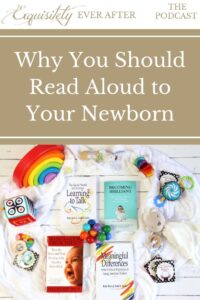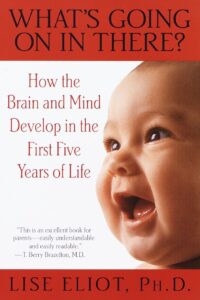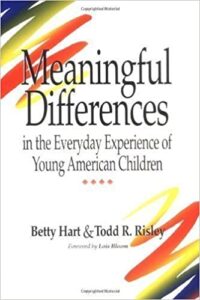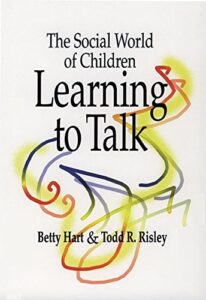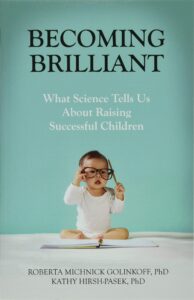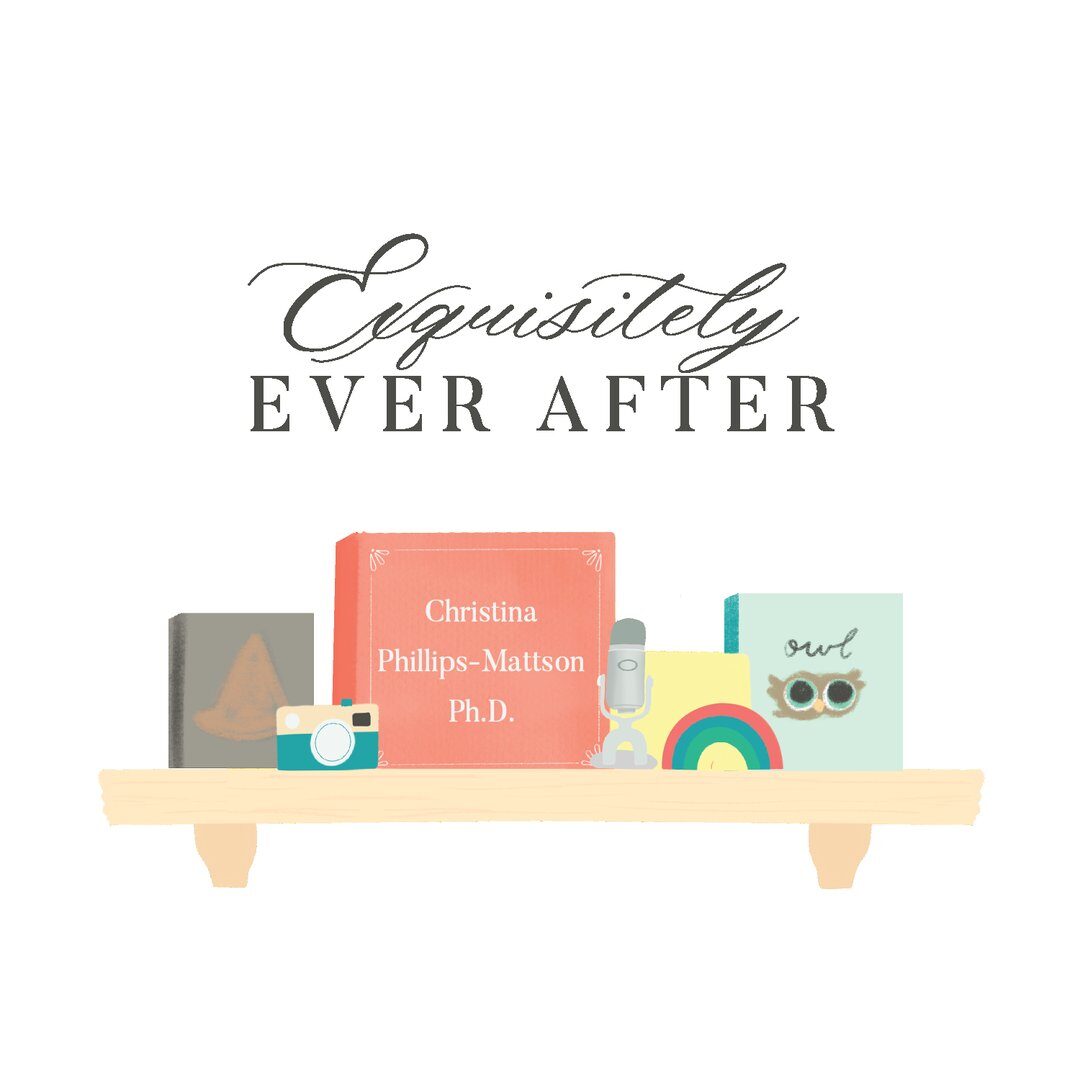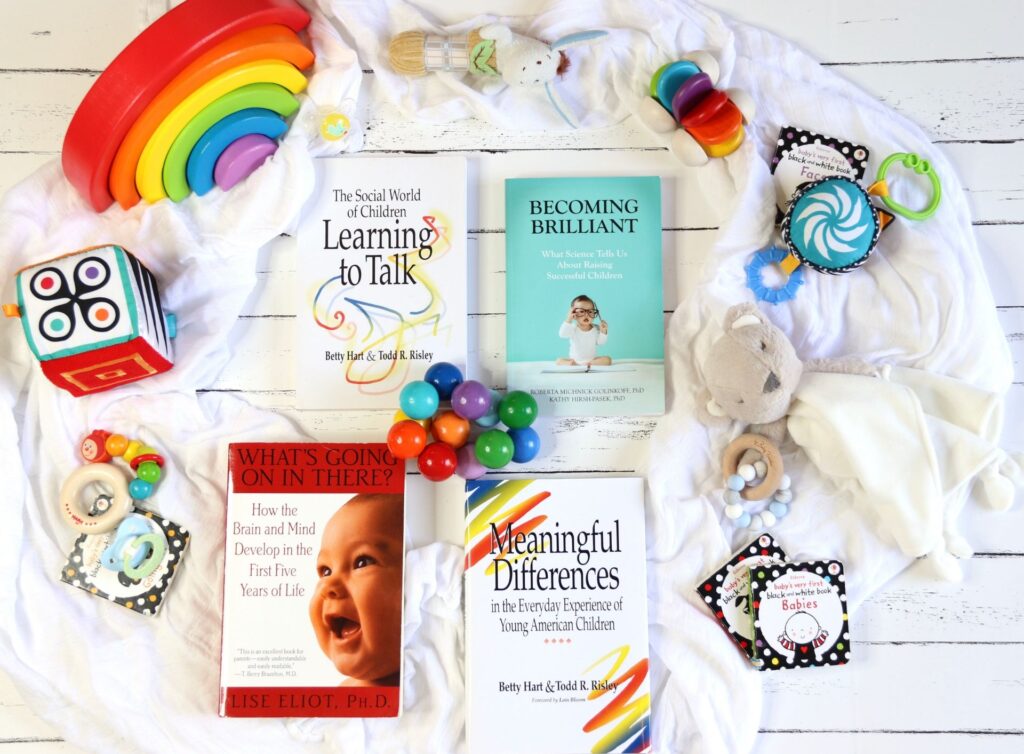
This post contains some affiliate links. Please see more here.
SUMMARY: We all know that reading is incredibly important to a young child’s developing brain, but I get a lot of questions from pregnant people and new parents asking, “When should I start reading to my child?” and “Why should I read to someone who really doesn’t seem to notice or care that I have a book in my hands?” So, in this episode, we’re going to look at a few different books that will give us some concrete answers to these questions with the science to back them up.
And tune in next week when we put what we’ve learned into practice and answer the obvious follow up questions, which are, of course, “How do I read to a baby?” and, the question I’m most looking forward to, “What books should I read to my newborn, brilliant, future-reader?”
Listen to the Podcast Episode:
Books Mentioned in this Episode:
*What’s going on in there? How the brain and mind develop in the first 5 years of life by Lise Eliot
Moby Dick by Herman Melville
The Cat in the Hat by Dr. Seuss
The King, the Mice, and the Cheese by Nancy and Eric Gurney
*Meaningful Differences in the Everyday Experience of Young American Children by Betty Hart and Todd Risley
*The Social World of Children Learning to Talk by Betty Hart and Todd Risley
*Becoming Brilliant: What Science Tells Us About Raising Successful Children by Roberta Michnick Golinkoff, PhD and Kathy Hirsh-Pasek, PhD
Goodnight Moon by Margaret Wise Brown
Note: Books marked with * are the focus books of this episode.
Podcast Transcript:
Hello Everyone! Welcome to Exquisitely Ever After, a podcast where we talk about reading children’s literature to cultivate kind, intelligent, and successful kids. I’m your host, Christina Phillips-Mattson. I have a Masters and a PhD in children’s and young adult literature from Harvard University and I am a writer, educator, and a mother of two little boys, a three-year-old named James and a one-year-old named Luke.
So today we’re going to talk about reading to babies! Yay! We all know that reading is incredibly important to a young child’s developing brain, but I get a lot of questions from pregnant people and new parents asking, “When should I start reading to my child?” and “Why should I read to someone who really doesn’t seem to notice or care that I have a book in my hands?” So, in this episode, we’re going to look at a few different books that will give us some concrete answers to these questions with the science to back them up. And this is going to be a two-part episode–next week, we’re going to put what we’ve learned into practice and answer the obvious follow up questions, which are, of course, “How do I read to a baby?” and, the question I’m most looking forward to, “What books should I read to my newborn, brilliant, future-reader?”
So, as Freulein Maria says, let’s start at the very beginning… a very good place to start. Because I’m a recovering academic, when I became pregnant with my first son, James, my obvious initial impulse was to go read as many books as I could–about babies, pregnancy, giving birth, sleep training, breastfeeding, anything and everything about life with a newborn… But then ALSO, because I’m a planner by nature and a Greek woman (which means that it’s never too early to start worrying about things that might or might not happen in the future), I went down a rabbit hole of parenting books for the post-newborn stages about early childhood language and literacy development, cognitive development, books on raising successful children, books on how to cultivate empathy, books on raising kids in a digital age, books on handling toddler temper tantrums, and so on. You get the picture. Basically, I got pregnant—yay!—and then I absolutely panicked about how much I didn’t know and immediately started trying to remedy that situation by reading everything I could get my hands on to try to stave off a complete emotional and psychological breakdown. In a shocker, I’m very Hermione-ish in that way: when in doubt, go to the library. Or in this case, when in doubt, fill your amazon cart so full that your husband worries that you are either preparing to deliver this baby yourself or attempting another PhD. To be honest, I’m not sure which would be worse… No, that’s not true. I am sure. Another PhD. Another PhD would definitely be worse. Also, just FYI, it’s not that I was doubtful about being pregnant—I was super, super thrilled—but in the event of any unknown occurring, my compulsion is always to research extensively and to the point of exhaustion. It’s a super annoying personal trait, but after 36 years, I give up. I’ve stopped trying to fight it.
Anyway, as I was researching the you-know-what out of pregnancy and newborn life in between bouts of morning sickness, I noticed that there really wasn’t much being written specifically about “babies and reading” in the conventional pregnancy or first-year-of-life books that I was devouring. However, contrastingly, in the parenting and childhood cognitive development and early language and literacy books that I was reading, reading aloud to very young children, newborns, and even reading to babies in the womb was stressed as crucial to raising successful, thinking, caring, curious, and empathetic children. So, I found that there is definitely a disconnect happening between the books targeted toward pregnant women and parents of newborns and what scientists have proven are important behaviors to adopt early on to maximize cognitive as well as social-emotional development. Which is kind of maddening. I was like, what is going on here? So many of us, and by “so many,” I mean basically all parents, are concerned not only about our babies’ physical needs, but also about their developing brains and personalities so it’s bizarre to me that all of these books don’t have at least one section–or even just one chapter–devoted to a newborn’s mind and how to help it expand. But whatever, never mind. As I’ve just mentioned, I’ve done enough research for all of us, so hopefully this episode will fill in that gap for those of you who for some reason do not want to spend your pregnancy and first few months of being a parent falling asleep at 3 a.m. on a 500- page book written by a neuroscientist about how the brain receives visual images vs. auditory cues or whatever. Oh, Christina of 2016, why didn’t you sleep more?
Anyway, moving on, let’s talk about the first question: “When should I start reading to my child?” Now, admittedly, my plan was always to start reading to my child pretty much right away because, first of all, honestly, I’d say about 40% of my desire to have a baby was so that I could read my favorite children’s books to him. –And the other 60% was to give my parents a grandchild because I knew it would make them so happy and that they would be an amazing Greek Yiayia and Pappou. Are you questioning the way I make huge life decisions right now? Because I am… just kidding… well, sort of… ANYWAY, second, I knew from all of my research during my graduate school experience that reading to your children early and often is one of the best ways to accelerate their language development and their linguistic mastery. But precisely when to start was always sort of nebulous. Most books say: start when the child is “young.” But as a detail-oriented person, this drove me crazy because I was like HOW young is “young”? How early should I start doing this? Like, should I start the minute I see the double blue line? In the hospital? When the baby is 6 months old? When he starts to say his first words? When??? So after a lot of searching, I finally came across a book called What’s Going on in There? How the Brain and Mind Develop in the First 5 Years of Life by Dr. Lise Eliot that gave me some really good, concrete answers without stressing me out, so I’m going to share those answers with you.
What’s Going on in There? How the Brain and Mind Develop in the First 5 Years of Life
First of all, Dr. Eliot tells us that beginning in the 6th month of pregnancy, babies can hear. So by the time they are born, babies already have about twelve weeks’ worth of actual listening experience. Which is crazy to me, but the good news is that you don’t need to start reading aloud or talking to your stomach before you even have a bump. You can wait until people won’t think you’re weirdly muttering to your midsection about, I don’t know, eating extra cookies or something. (I mean, yes. You will absolutely still look a little crazy to some people if they see you bust out a copy of Moby Dick and start “Call me Ishmael-ing” to your baby bump, but at least they’ll know that there is another tiny set of ears present and maybe listening to you.)
Dr. Eliot goes on to tell us that not only do fetuses hear before birth, but they can also remember what they’re listening to and they can recognize familiar sounds in their environment after they are born. These familiar sounds, she tells us, are comforting to newborns and help ease them into living outside the womb. So cute, right? –Or maybe anxiety-inducing if you, like me, had a toddler who was going through a particularly earsplitting stage during your pregnancy. But oh well, at least Luke was prepared when he joined us.
What’s also pretty amazing is that, by birth, babies have also even become somewhat discriminating about what they like to hear. Specifically, their mother’s voice is their preferred sound, especially when she speaks in the higher-pitched, singsong style known as “motherese” or “parentese.” AND, in contrast to vision where newborns show a preference for simpler stimuli (which we will get into next week when we talk about what kind of books to read to your newborns and infants), a newborn prefers to hear more complex sounds, like music and highly intonated speech rather than pure tones or other simple sounds.
But what is absolutely incredible is that in this book, Dr. Eliot recounts a case study in which researchers prove that newborns both remembered and preferred a specific story that they heard only in the womb after they were born…!!! Which, to me, is just bananas. But here’s how they did it: A group of mothers were asked to read a particular story aloud, twice a day, during the last six weeks of their pregnancies. The story was Dr. Seuss’s The Cat in the Hat and they estimated that the babies spent a total of about five hours listening to their mothers read this story while in the womb. Then, shortly after birth, they were tested to see whether they preferred listening to their mothers read The Cat in the Hat or another story, The King, the Mice, and the Cheese by Nancy and Eric Gurney. The way they tested was by taking advantage of the potent sucking reflex of newborns. While still in the hospital, these two-to-three-day-old babies were outfitted with headphones and a special pacifier that measured the frequency and the strength of their sucking. The pacifier was rigged up so the baby could actually control which book was being read into the headphones by adjusting his or her rate of sucking. [And just some background information: In a previous study, it showed that babies sucked more and harder on the pacifier when their mothers were speaking as opposed to when another woman was speaking, so they had already learned that babies suck harder and more frequently when they prefer something. And, incidentally, you can try this out with your baby at home–I totally did with both of my children, and my findings supported the study. Not that my findings matter in the slightest, but I was super excited about it—haha, if I haven’t made it abundantly clear already that I’m a huge nerd about this kind of stuff, I’m sure it’s clear now!] ANYWAY, in this case study with the books, these newborns all sucked more to hear The Cat in the Hat, showing that they both remembered and preferred a book that they had only previously heard in the womb. I don’t know about you, but this blew. my. mind. When I was re-reading this book to prepare for this episode, I saw in my margin notes that I’d actually written “BONKERS” in capital letters and I think that pretty much sums it up. In any case, this study proved that babies really do imprint auditory experiences while still in the womb. SO, by reading to your child from the third trimester on and through the newborn phase you are actually directly influencing the quality of your child’s auditory development. Which is pretty incredible when you think about it.
Okay, so let’s move on to answer our second question: Why is it important to read to babies who frankly don’t seem to understand what’s going on? As we just learned from this experiment with The Cat in the Hat, all the listening that children do from the third trimester on shapes the way their brains become wired to process and understand different sounds. A baby’s hearing can be modified by experience. And so these early experiences with speech and music, whether it is through conversation, reading aloud, or singing songs, are super important in shaping many of the higher aspects of brain function, including emotion, language, and other cognitive abilities. And babies’ brains are primed to absorb language and they are maximally capable of learning words–and the rules and logic of grammar–only until six or seven years of age, though many can already master this by the age of four. This is also one of the reasons why it gets more difficult to learn another language if you haven’t been introduced to it early as a young child. So what we want to do is optimize our children’s language skills early and create the best environment for their brains to grow in. And reading is one of the best—if not THE best—ways to do this. So in the next few minutes, I’m going to explain why scientists think reading in particular might be the best way.
Meaningful Differences in the Everyday Experience of Young American Children
Back in 1992, psychologists Betty Hart and Todd Risley published a groundbreaking study of how differences in early language experience contribute to children’s later verbal skills. They were the first to uncover what is now called “the 30 million word gap” that purportedly exists between children from low-income households and their more economically advantaged peers, which shows that the large differences in children’s language experiences were tightly linked to a child’s outcome in life. The study indicated that children from low-income families hear an average of 13 million words in the first four years of life as opposed to the almost 45 million words heard by children who grow up in more economically advantaged homes. So, they claimed the difference is about 30 million words. The results of their study are really, really staggering and you can read more about in their book Meaningful Differences in the Everyday Experience of Young American Children as well as in their companion book The Social World of Children Learning to Talk. To be clear, this gap certainly doesn’t exist because the desire for a child’s success is somehow less in a low-income household. That is definitely not the case and I think there is a lot left out in the study about how privilege is tied to success. There are also a lot of socio-economic factors that likely contribute to there being less words spoken to children in some lower-income households. But to sum it up for our purposes today, Hart and Risley found that the most discernable influence over children’s language development and a key indicator of their future success turned out to be the mere amount their parents talked to them; the children who had larger, faster-growing vocabularies and scored higher on IQ tests were the children whose parents addressed or responded to them more in early life. So, the good news is that no matter what kind of household a child is born into, parents and caregivers can close the word gap by giving that child more language experiences. Therefore, a key takeaway from the study is that income level or a parent’s level of education does not have to affect a child’s ultimate success in life. And Hart and Risley’s study was fundamental in changing public policies, programs, and philanthropic initiatives to address the disparity that they discovered.
The Social World of Children Learning to Talk
However, before we move on, I just want to note that there has been some controversy as to whether it really is 30 million words. When the study was replicated in more recent years, the difference was more like 4 million words by age 4 instead of 30 million by age 3. And there are also things about the original study that critics of it say should be taken into account, and I definitely agree with some of these things, like, for example, that the presence of a researcher, especially if that researcher was someone of another race, might have intimidated some of the families into silence whereas higher-income, educated parents might have been more likely to show off by talking more when an observer was present. And I don’t think that the number of words spoken in another language should be discounted towards the total words a child knows. For example, an immigrant family whose child is growing up learning a different language than the dominant standard English spoken in school will have to learn how to code-switch between two ways of thinking when she gets to school, but she doesn’t necessarily have a word deficit—she still has a wealth of words, just not all in the same language.
However, even though I agree with some of the criticisms of the study, I honestly don’t think that the main criticism, this quibbling over the absolute value, the number of words, is actually what really matters, especially when it comes to policymaking that will help kids who are at a disadvantage succeed. What matters is that there IS a difference that can impact a child’s development and we need to better serve those kids.
So, as far as we’re concerned about how this relates to reading to newborns, here’s the deal: Hart and Risley’s study showed that parents who talk more predictably exposed their children to a greater variety of words and sentences. So a correlation was established between the diversity of parents’ language—the number of different nouns and adjectives they used, and the length of their phrases and sentences—and their children’s linguistic progress. We know that as a result of their cumulative experience with language, by three years of age, children are already headed down really different paths of verbal achievement. This tells us that language stimulation should begin immediately, ideally at birth and through the newborn stage and continue throughout a child’s life. But, most important, I think, was the other finding of the study: Hart and Risley’s study showed that it was both the quantity and quality of language that your child hears that’s super critical. The two are absolutely linked. Yes, the more words a child hears the larger her vocabulary will be and the faster it will grow, but they also found that this happens ONLY IF the words that the child hears are directed at her. In other words, the volume of conversation a child hears around her doesn’t make much difference if it isn’t directed at her. Her vocabulary and language development are fundamentally linked to the amount of conversations that she is a part of. So, the definition of the quantity of words a child hears actually means the quantity or number of words addressed to the child. Dr. Kathy Hirsh-Pasek, who is co-author with Dr. Roberta Michnick Golinkoff of another excellent book that I highly recommend called Becoming Brilliant: What Science Tells Us About Raising Successful Children, tells us that there is a crucial difference between words that are merely overheard and child-directed speech. She says that for young children to benefit from overheard speech, the child must stop what he’s doing and direct his attention to an interaction between other people and decipher what they’re saying. This type of overheard language is usually what’s called “decontextualized talk,” where an adult is having a conversation with another adult that’s geared toward something not necessarily close at hand, say about movies, or politics, or what’s going on at work, and so on. Speech directed at a child, on the other hand, differs significantly in terms of its content, complexity, and the attentional demands placed on the child. In other words, when you talk to your newborn or your infant or toddler, she’ll hear things like, “Here’s your juice! Do you want your juice? Yes? Do you like your juice?” So the child is receiving input that is uncharacteristic of adult conversations. You don’t say to your partner, “Here’s your wine! Do you want your wine? Yes? Do you like your wine?” Instead, you might say something over a glass of wine like, “Cheers! Did you watch that episode of the Great British Bake Off where Chetna won the technical challenge because she knew that the bake time mattered more than the second prove of the povitica?” This is a pretty impossible conversation for your child to make sense of because she can’t relate to any of it. (Incidentally my husband says that he can’t decipher this either, but that’s another story.) Anyway, deciphering decontextualized talk is a challenge for young children–without participating in the exchange and being privy to informative social cues, recognizing the words being said (let alone understanding their meaning) is basically impossible for them. So, the bottom line is: ambient noise doesn’t really contribute to the number of words your baby learns; if you are talking to someone else around your baby, the words that you say don’t really make much of an impact on your child’s vocabulary. So, I think the really important takeaway from this study is that what children need to succeed are more opportunities, everyday, to participate in conversations with their parents and caregivers.
Becoming Brilliant: What Science Tells Us About Raising Successful Children
Incidentally, this is why most television or audio programs also do not contribute to the number of words your child learns. There are definitely exceptions that we can talk about another day if you’re interested in an episode on books about screentime for children, but for the most part, no matter how “interactive” a television show is, a baby can only begin to make sense of language when it refers to something she can directly relate to.
So yes, the key takeaway from this episode is: child directed speech is what matters most.
So, okay, what does this mean for reading and newborns? How can reading aloud help us with child-directed speech and provide early language enrichment to your child?
Dr. Eliot tells us that young children learn best when they can hear and see how words are made. So for newborns and young infants, it’s important to have face-to-face contact so that #1 the baby knows that she is being addressed and #2 that when/if she responds, she knows that she is being heard. Additionally, Eliot tells us that the quality of the language to which a child is exposed is also really important and needs to be simple, clear, and positive in tone to be of maximum value. So when parents/caregivers talk to their babies, they should try to focus on the here and now, pointing out and labeling the objects, people, and events in their children’s immediate environment.
And this is where books and reading, as opposed to television or other media, can be uniquely helpful. When we read a simple, bright picture book to our infants, we capture their attention because we are speaking to them directly; we can ensure that they are focused precisely on the items our words are referring to by pointing to various things on the page; and we can make certain that our child feels heard by responding to their reactions, however small. We’ll talk more about how and what to read to small babies next week, but let’s just say, for example, that I’m reading Margaret Wise Brown’s Goodnight Moon to my baby: I can say, “In the great green room, there was a telephone, and a red balloon, and a picture of…the cow jumping over the moon.” When I name each object, I can point to it and then address my child and say, “Look, Jamesy, do you see the red balloon? It’s right there, floating up toward the ceiling. Look how round that red balloon is, James!” That way, my baby knows that I’m talking to him directly about what he is seeing. Then, if my baby seems fixated on a particular image, I can point to it and say, “What are you looking at Luke? Oh, are you looking at the little toy house? Do you like that little house’s bright windows? Let’s touch them with your finger. Those yellow windows are so bright, aren’t they, Lukey?” In this way, I’m responding to my baby and making sure that he knows that I’m paying attention to him.
Also, as we’ve learned, it’s important to continue to add to our babies’ vocabularies by diversifying our language. By reading aloud, we can expose our babies to things and concepts we might not have immediately on hand, like, say, an owl, or a tree or, in the case of Goodnight Moon, a red balloon or a bowl full of mush. In this way we can achieve the happy medium of speaking to babies in a way that is largely within their reach of understanding but also stretches them a bit beyond it, which is ideal for vocabulary acquisition.
Finally, what’s really interesting is that studies show that parents and caregivers do their best teaching while reading to their young children. And this makes sense because books tend to broaden the vocabulary parents use with babies and small children. You probably wouldn’t naturally use words like “astonish” or “flutter” or “rustle” when speaking to your baby in the course of your everyday life (I mean, maybe you would, but I probably wouldn’t unless the circumstances were right or I was trying to consciously be intentional in my language) BUT if you are reading aloud to your baby from one of the books I’ll be talking about next week, your baby will hear those words and she’ll begin to divine their meaning because you will be engaging with her directly. AND, lastly, and related to this point, books also tend to offer a great way to stimulate a child’s own speaking, provided that the parent or caretaker who is reading aloud uses them as a jumping-off point for conversation. Suffice it to say, studies show that books are without a doubt the most effective tool for teaching language, but we’ll talk about this more in part 2 of reading to newborns and infants. Yay!
So, okay, with that in mind, please tune in next week for an episode that puts all of this information into practice when we talk about just what kinds of books to read to your babies. I’m super excited for this episode because it was so interesting and fun for me to introduce books to my own little guys and see which ones they ended up engaging with and loving. Plus, really, is there anything cozier than snuggling up with a baby and reading a book? You get that new baby smell AND the smell of a book. Ugh. It’s just so great. They should totally make that into a candle. I would buy a thousand of those.
And just a sort of P.S. to this episode: before I sign off, I feel like I should put in a sort of caveat because, obviously, if you’re listening to this and you are a parent already and you didn’t read to your child in the womb or at birth or in the early months of his or her life, I want to assure you that it’s not like you missed the window of opportunity and now your child is condemned to a life of illiteracy. NOT AT ALL. Just talking to your children, paying attention, and having conversations with them is enough to help their language development and get in those 45 million words that Hart and Risley are talking about. The reason I thought it was important to share this information about reading to newborns and infants with you all is because I think reading aloud is falling by the wayside as we shift into an increasingly technological and consumer-driven world. There are a lot of companies and creators of products for children who want us to believe that their app, their show, their toy is the best way for our children to learn language and become literate and grow into successful people and it’s just not true. The best way is for you to talk to your children, engage with them as much as you can, AND to read to your child as often and as early as you can. And thanks to the public library system, the best news is that all of these ways are free and accessible to everyone. So, don’t stress about the days that you don’t have time to read aloud. Just try to fit reading in as much as you can and on the days that you can’t, just simply have a conversation with your children about whatever is on their minds or going on in their lives or if they are newborns, whatever is around them in their environment. That’s really what they need most. Plus, the fact that you are taking the time to try to learn more about reading to children by listening to a podcast like this should tell you that you are already committed to giving your child the best possible chance in life and helping them become the best person that they can be. So, don’t sweat it. You’re doing an amazing job.
So that’s it for this episode of the Exquisitely Ever After podcast. As always, please visit the show notes at, exquisitelyeverafter.com/episode4 for a complete list of the books that were mentioned today and, if you haven’t already, you can also download a free PDF of what I think are the 25 Best Board Books for Toddlers. And if you liked this episode or this podcast in general, please do subscribe, it’s totally free and by subscribing you ensure that you don’t miss any new episodes. AND, if you have a minute between drive-by graduations, or taking your kids for a socially-distant walk, or feeding your quarantine sourdough starter, please leave me a review! For a new show like mine, it helps so, so much. I really appreciate that you took time to listen to me talk about reading to children today!
And I want to hear about your experiences reading to your little ones. Were you one of those people who looked ridiculous reading aloud to your stomach? Have you used your baby as a guinea pig and experimented with reading and singing to him or her in the womb? And looking ahead to our next episode, what books did you read to your babies? Send me an email at christina@exquisitelyeverafter.com or dm me on Instagram at exquisitelyeverafter or leave me a comment on the blog post for this episode, at exquisitelyeverafter.com/episode4.
Thanks so much, everyone! Take care, keep safe, and keep reading!
Pin This Episode For Later:
